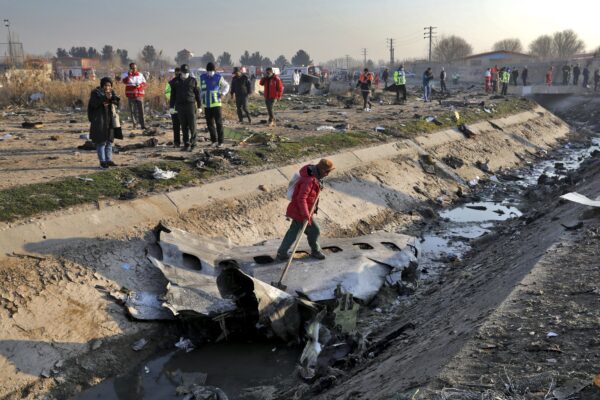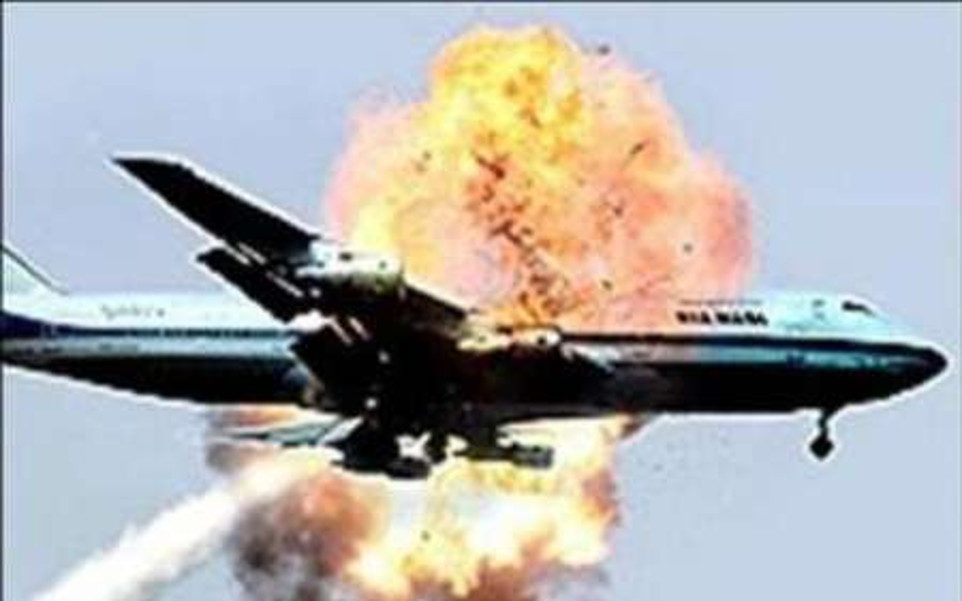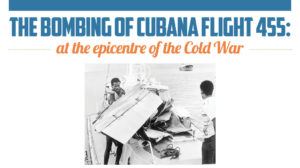
Iran Admits Shooting Down Ukrainian Airliner ‘Unintentionally: Iranian military blames human error for incident
(January 10, 2020) — The downing of a Ukrainian airliner near Tehran earlier this week was indeed the result of it being hit by an Iranian missile, Iran’s military confirmed on Friday. The incident was a mistake, which they attributed to “human error.”
The plane took off from Tehran’s airport and was flying to Kyiv. Iran says it flew close to a sensitive military site and someone mistakenly reacted. State TV said that those responsible would be held accountable.
Iranian officials had initially denied being involved. It’s not immediately clear how this changed, though Iran had requested Canada and other nations blaming a missile provide the information to them. Fairly quickly Iran’s military came forth to correct the record.
Nobody really thought this was an intentional shoot-down. Rather, this came amid Iran firing missiles at US targets inside Iraq, and was likely on high alert for US retaliation. Still, accidentally hitting a civilian airliner and killing nearly 200 civilians is an embarrassing mistake to have to admit to.
Iranian officials said concern of US retaliation had led to an increase in US flights around Iran, prompting an increase in radar activity across the country. That, and the airliner getting close to a sensitive site, apparently led someone to jump the gun.
Iranian officials referred to the site in question as a sensitive Iranian Revolutionary Guard base, and took the “rotation” of the plane as meaning to move directly over it.
Iranian Foreign Minister Javad Zarif issued apologies to all victims, affected nations, as well as to the Iranian people for the embarrassing incident.
Analysts say Iran is particularly sensitive to the shoot-down of airliners because of the 1988 US attack on Iran Air Flight 655, killing 290 people. Iran has long been deeply critical that the US never apologized for this attack, and clearly wants to contrast that with a quick apology of their own.
With a number of the victims on the Ukrainian plane also dual-Iranian citizens, this is potentially a major domestic problem for Iran, and officials seem to believe being honest and apologetic is the best strategy.
Ukraine Airliner Tragedy Evokes Memories of Deadly US Attacks on Iranian, Cuban Passenger Jets

In 1988, a US missile blew up an Iranian passenger plane, killing 290 Iranian travelers. The US has never apologized.
“I’ll never apologize for the United States of America, ever; I don’t care what the facts are.” — Vice President George H. W. Bush after the US Navy shot down Iran Air Flight 655 in 1988, killing 290 innocent people, including 66 children
(January 10, 2020) — It’s too early to tell whether or not Iran shot down Ukraine International Airlines Flight 752 shortly after the Boeing 737-8KV took off in Tehran on Wednesday, killing all 176 people on board. One thing seems almost certain—if Iran did shoot down the plane, it was by accident.
Canadian Prime Minister Justin Trudeau and Boris Johnson, his British counterpart, both claim to have intelligence and other evidence that Flight 752 was hit by one or more surface-to-air missiles, while US President Donald Trump opined that “somebody could have made a mistake on the other side.”
It’s practically impossible to imagine a scenario in which Iran would intentionally target a Ukrainian commercial flight; fortunately, cool heads seem to be prevailing ahead of investigations of the incident.
‘I’ll Never Apologize for the United States of America’
For many Iranians, the Tehran tragedy brought back painful memories of a similar incident from more than 30 years ago during a period of similarly heightened tensions between the United States and Iran.
On July 3, 1988 the US guided missile destroyer USS Vincennes shot down Iran Air Flight 655, an Airbus A300 flying in Iranian airspace and carrying 290 civilians from Tehran to Dubai via Bandar Abbas, killing all aboard. The victims included people from six countries, including 66 children. The US maintains this was an accident, while Iran accused the US of an intentional act of state terrorism.
According to the official US account, the Vincennes’ crew misidentified the civilian airliner, claiming its flight profile was similar to that of the US-made F-14 Tomcat fighters sold to the Imperial Iranian Air Force during the last years of Shah Mohammad Reza Pahlavi’s dictatorship.
The latter years of the Iraq-Iran war—which began in 1980 after the US encouraged Iraqi dictator Saddam Hussein to invade his much larger neighbor — saw periodic skirmishes between US and Iranian forces in the Persian Gulf and Strait of Hormuz.
On the morning of July 3, a US helicopter came under small arms fire from Iranian patrol boats; the Vincennes gave chase into Iranian waters, where it fired two surface-to-air missiles at the doomed airliner.
Serious questions were raised by the US account of the incident. First, the Vincennes’ Aegis Combat System, a state-of-the-art computer and radar tracking and guidance system, indicated the plane was climbing and not descending as an attacking F-14 would.
Second, Flight 655 was transmitting the correct transponder “squawk” code for a commercial airliner, while maintaining radio communication in English with nearby air traffic controllers.
Third, Iran argued that even if the plane had been a fighter jet, the US had no right to shoot it down, as it was in Iranian airspace and its flight path couldn’t possibly indicate an attack profile as it was climbing when attacked.
The Reagan administration told lie after lie about the incident. It claimed the Vincennes was in international waters at the time of the attack. It was not.
It said the ship acted in self-defense against the “descending” plane; Flight 455 was climbing when it was shot down.
It also claimed the flight had strayed from its usual route. It did not.
It told the United Nations that the Vincennes was rushing to defend merchant shipping from Iranian attack, a complete fabrication.
President Ronald Reagan swiftly apologized to Iran for the incident, while Vice President George H.W. Bush — who was running for president that year — shocked the world with his response to his country’s mass killing of 290 innocent civilians. “I’ll never apologize for the United States of America, ever,” he said on August 5. “I don’t care what the facts are.”
A subsequent Pentagon investigation concluded that Flight 655 “was on a normal commercial air flight-plan profile, in the assigned airway, squawking Mode III (civilian), on a continuous ascent in altitude from take-off at Bandar Abbas to shoot-down.”
In 1996, the United States agreed to pay over $60 million, or just over $213,000 per passenger, to families of Iran Air Flight 655 victims, without admitting any legal liability.
For the sailors of the USS Vincennes, praise, not punishment, was the order of the day. All received combat action ribbons, while the ship’s air warfare coordinator was awarded a commendation medal for the “heroic achievement” of “quickly and precisely completing the firing procedure” that shot down Flight 655. Captain Will Rogers III was honored with the Legion of Merit for his “outstanding service.”

‘A Bus with 73 Dogs’
While Iran Air Flight 655 was almost certainly a tragic accident, an earlier attack on a commercial airliner closer to home bears much more sinister US fingerprints.
On the balmy afternoon of October 6, 1976, Cubana de Aviación Flight 455, a DC-8 carrying 73 passengers, many of them teenage members of Cuba’s junior Olympic fencing team, took off from Barbados bound for Jamaica. The plane made a brief stop in Trinidad and Tobago, where two anti-Fidel Castro terrorists planted a pair of bombs, cleverly hidden inside a camera and a tube of toothpaste, aboard the plane.
They exploded shortly after takeoff, blasting a hole in the plane and sparking a fire as it plunged into the sea. There were no survivors of what was, until September 11, 2001, the worst-ever act of airborne terrorism in the Western Hemisphere.
Shortly after the attack, one of the terrorists, Hernán Ricardo, phoned Orlando Bosch, a CIA-backed, Miami-based Cuban exile militant who, along with fellow anti-Castro terrorist and longtime CIA agent Luis Posada Carriles, planned the bombing.
“A bus with 73 dogs went off a cliff,” Ricardo told Bosch. “All got killed.”
The CIA, under its new director at the time — none other than George H. W. Bush — knew as early as June 1976 that Cuban exiles were plotting to blow up a Cubana airliner, but did not warn Havana.
Ricardo and his accomplice Freddy Lugo were arrested in Trinidad and Tobago. They confessed to the bombing and fingered Bosch and Posada Carriles as the masterminds of the attack. The four men were jailed in Venezuela but Bosch and Posada Carriles escaped. They eventually made their way back to Florida, where they were welcomed as heroes — the city of Miami even declared an official Orlando Bosch Day — and protected by Bush, who was now president. This, despite the Justice Department calling Posada Carriles, the hemisphere’s most wanted terrorist, “an unrepentant criminal and admitted mastermind of terrorist plots and attacks.”

Bosch and Posada Carriles lived out the rest of their lives in sunny South Florida while relatives of Flight 455 victims waited for justice that was never delivered. Posada Carriles pursued a successful art career while Bosch made frequent media appearances, always insisting that “there were no innocents on that plane.”
Roseanne Nenninger Persaud of Guyana, whose 19-year-old brother Raymond died on Flight 455, told the New York Times in 2006 that the perpetrators of the bombing should be “treated like [Osama] bin Laden.”
“If this were a plane full of Americans, it would have been a different story,” she said.
Brett Wilkins is a San Francisco-based freelance author and editor-at-large for US news at Digital Journal. His work, which focuses on issues of war and peace and human rights, is archived at www.brettwilkins.com.
Posted in accordance with Title 17, Section 107, US Code, for noncommercial, educational purposes.